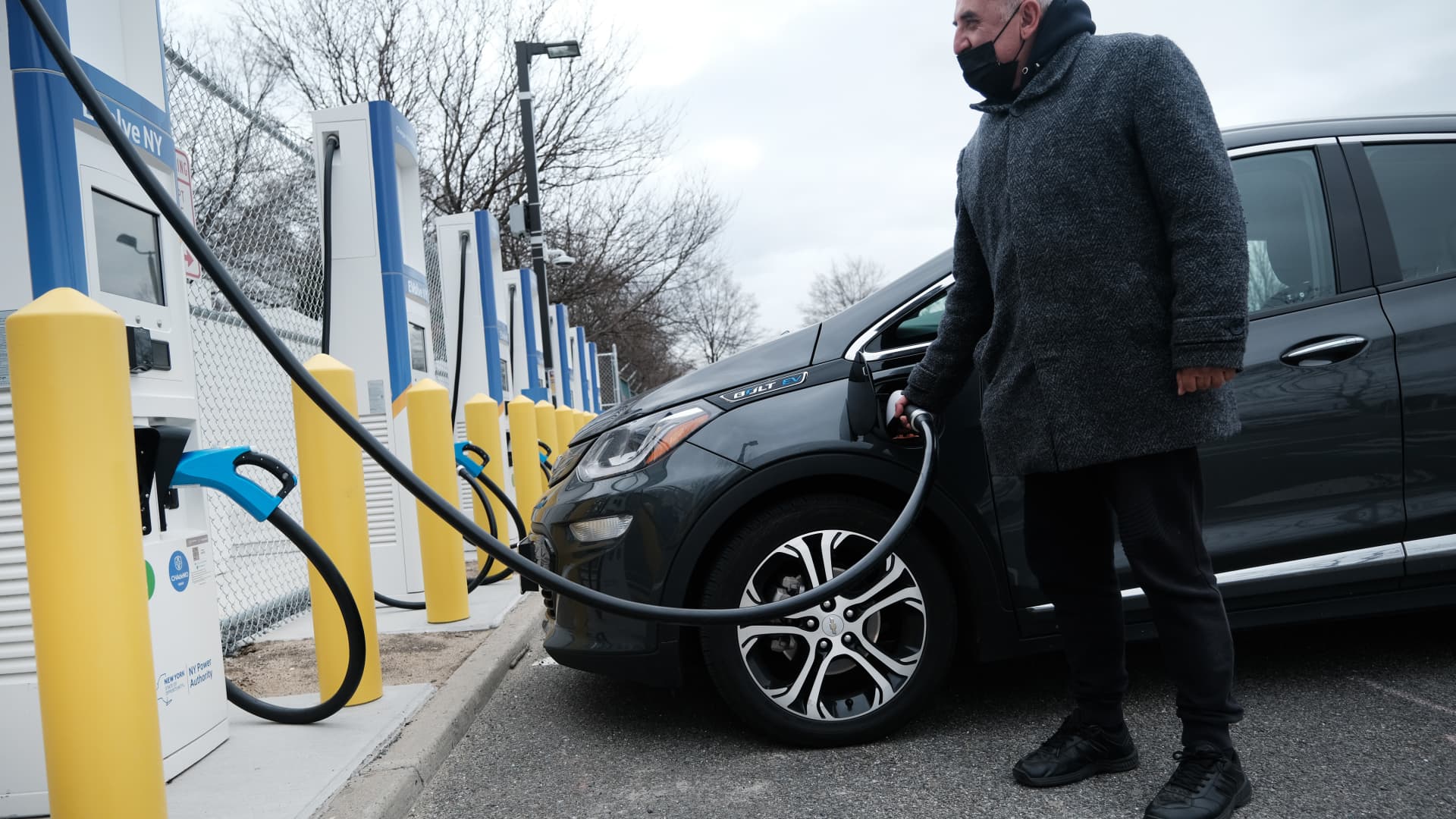
A driver uses a fast-charging station for electric in the cell phone lot at John F. Kennedy (JFK) airport on April 02, 2021 in New York City.
Spencer Platt | Getty Images
It has been true for years: Mile for mile, it’s cheaper — generally much cheaper — to recharge an electric vehicle than it is to refuel one with an internal-combustion engine.
That has been a key selling point for Tesla and other EV makers, particularly in times when gas prices have soared, such as now. But this time there’s a wrinkle: While gas prices have indeed soared in the wake of Russia’s invasion of Ukraine, so have electricity prices — particularly in some parts of the U.S. that have been big markets for Tesla’s EVs.
That raises a question: Is it still true that it’s much cheaper to “refuel” an EV? The charts below help us find the answer.
The first chart, using nationwide figures, provides a baseline. The others use data specific to Boston and San Francisco, two markets where EVs are popular — and where electricity tends to be more expensive than the national average.
The answer in all three cases is that — even with regional surges in the price of electricity — it’s still quite a bit more expensive to fill your gas tank than it is to charge your EV’s battery.
Electricity rates have roughly kept pace with gas price increases in Boston and San Francisco. Yet, on average across the U.S., adding 100 miles of range in your internal-combustion vehicle has become more expensive, relative to charging an EV an equivalent amount, over the last couple of months.
Is that likely to change? While oil prices are nearly certain to fall in coming months as producers increase output, it’s unlikely that the price of electricity will rise enough to make EVs less affordable over their life cycles than internal-combustion alternatives.
Using February data, Jeffries analyst David Kelley recently calculated that the total lifetime cost of ownership of an EV is about $4,700 less than that of an internal-combustion vehicle. He said that cost difference is likely to increase as more EVs come to market — and as battery prices continue to fall — over the next couple of years.
How we crunched the numbers
We had three questions in mind when we put together these charts:
- How much does it cost to add 100 miles of range to the average ICE vehicle and the average EV?
- How have those costs changed over the last three years? (Going back three years to February of 2019 gives us a prepandemic baseline.)
- How have those costs varied between different parts of the U.S.?
For gasoline, the Environmental Protection Agency reported that the average new vehicle sold in the U.S. in 2020 had a combined fuel-economy rating of 25.7 miles per gallon. Driving 100 miles in that average vehicle would use 3.9 gallons of gas. (Figures for 2021 haven’t been released yet.)
On the electric-vehicle side, the EPA’s efficiency rating for EVs — called “MPGe”, for miles per gallon equivalent — gives consumers an idea of how far an EV can travel on 33.7 kilowatt-hours (kWh) of charge. Why 33.7 kWh? That’s the amount of electricity that is chemically equivalent to the energy in a gallon of regular gasoline.
The average MPGe rating for 2022-model-year EVs sold in the U.S. is about 97, so driving 100 miles in that hypothetical average vehicle would use 34.7 kWh of electricity.
The charts above compare how the price of 3.9 gallons of gas has changed relative to the price of 34.7 kWh over time, using monthly data from the U.S. Energy Information Administration (for gas prices) and the U.S. Bureau of Labor Statistics (for electricity rates) from February 2019 through February 2022.
– CNBC’s Crystal Mercedes contributed to this article.






